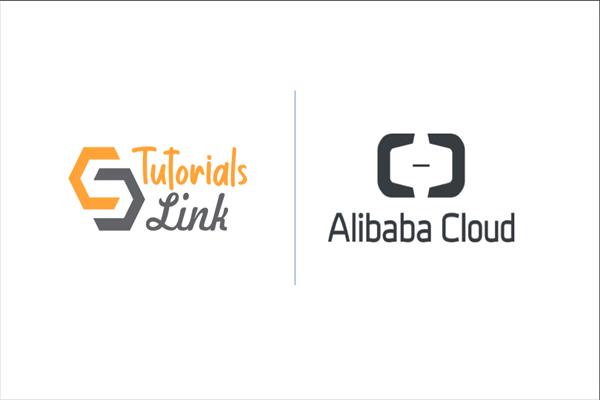Migrating Applications to Alibaba Cloud
Migrating applications to the cloud has become a strategic priority for businesses looking to harness the scalability, flexibility, and cost-efficiency of cloud platforms. Alibaba Cloud, one of the leading cloud service providers, offers a comprehensive suite of tools and services tailored to make the migration process seamless and effective. Whether you're a seasoned developer or exploring cloud migration for the first time, this guide provides actionable tips, strategies, and insights to migrate your applications to Alibaba Cloud successfully.
Why Migrate to Alibaba Cloud?
Alibaba Cloud has earned its place among the top global cloud providers due to its extensive offerings and robust infrastructure. Here are some key reasons to consider Alibaba Cloud for your migration:
- Global Reach: Alibaba Cloud operates in over 20 regions and 80 availability zones worldwide, ensuring low-latency access for users across the globe.
- Cost-Effectiveness: With competitive pricing models, pay-as-you-go options, and tiered discounts, businesses can optimize their cloud expenses.
- Comprehensive Ecosystem: From compute and storage to analytics and AI, Alibaba Cloud provides an integrated ecosystem to support diverse workloads.
- Security and Compliance: Alibaba Cloud meets global compliance standards, including GDPR, ISO 27001, and SOC 2, ensuring robust security for your data and applications.
As Gartner’s report on cloud infrastructure notes, “Selecting a cloud provider with strong regional presence and comprehensive tools is essential for maximizing migration benefits.” With Alibaba Cloud, businesses can achieve just that.
Key Phases of Migration
Successful migration to Alibaba Cloud requires careful planning and execution. The process typically unfolds in the following phases:
1. Assessment and Planning
The first step in any migration journey is a thorough assessment of your current environment. This phase sets the foundation for a smooth transition:
- Application Inventory: Catalog all applications, databases, and workloads. Identify dependencies between applications to avoid disruptions during migration.
- Cost Analysis: Use Alibaba Cloud’s pricing calculator to estimate the cost of running your applications on their platform.
- Architecture Design: Develop a cloud architecture blueprint that aligns with Alibaba Cloud’s offerings. This includes selecting regions, availability zones, and disaster recovery plans.
- Migration Goals: Define clear objectives, such as reducing infrastructure costs, improving performance, or enabling global accessibility.
2. Environment Setup
Once the planning is complete, the next step is to prepare the target environment on Alibaba Cloud:
- Set Up the Infrastructure: Use Elastic Compute Service (ECS) for virtual servers, Virtual Private Cloud (VPC) for isolated networks, and Server Load Balancer (SLB) for traffic distribution.
- Secure the Environment: Implement Identity and Access Management (IAM) to control user permissions and configure Security Groups for network-level protection.
- Data Backup: Before migration, ensure your data is backed up to prevent loss during the process.
3. Data Migration
Migrating data to Alibaba Cloud involves transferring databases, files, and other assets while maintaining data integrity:
- Databases: Alibaba Cloud’s Data Transmission Service (DTS) supports real-time and offline database migration with minimal downtime. Whether you’re using MySQL, PostgreSQL, or Oracle, DTS simplifies the migration process.
- Unstructured Data: Use Object Storage Service (OSS) to store and manage files such as images, videos, and backups. OSS supports bulk uploads and integrates with Content Delivery Network (CDN) for faster access.
- Network Transfer: For large-scale migrations, leverage Express Connect to establish a high-speed, dedicated connection between your on-premises environment and Alibaba Cloud.
4. Application Migration
Migrating applications can range from a simple lift-and-shift to a complete refactoring for cloud-native capabilities:
- Rehosting (Lift-and-Shift): Move applications to ECS without modifying the underlying code. This is the fastest migration method and is suitable for legacy systems.
- Refactoring: Modify applications to take advantage of Alibaba Cloud’s features, such as Function Compute for serverless execution or PolarDB for high-performance databases.
- Containerization: Use Container Service for Kubernetes (ACK) to package applications into containers for portability and scalability.
5. Testing and Optimization
Before going live, thoroughly test your migrated applications to ensure they meet performance and security benchmarks:
- Performance Testing: Use CloudMonitor to track application performance, latency, and throughput.
- Security Audits: Conduct penetration tests and configure Web Application Firewall (WAF) to protect against web-based attacks.
- Cost Optimization: Analyze resource utilization and adjust instance types or storage classes to reduce costs.
6. Deployment and Go-Live
The final phase involves deploying applications in the production environment:
- Monitoring: Set up real-time monitoring using Log Service and Application Real-Time Monitoring Service (ARMS).
- Disaster Recovery: Implement disaster recovery solutions like Cross-Region Replication (CRR) for OSS to ensure business continuity.
- User Training: Provide training for your team to familiarize them with Alibaba Cloud’s tools and features.
Best Practices for Migration
Migrating to Alibaba Cloud is a strategic process that requires careful execution. Here are some best practices to ensure success:
- Start Small: Begin with a pilot project to test the migration process and address any challenges before scaling up.
- Leverage Alibaba Cloud Tools: Use native tools like Server Migration Center (SMC) and DTS to streamline migration tasks.
- Optimize Costs: Regularly review your resource usage and leverage cost-saving options like Reserved Instances or Preemptible Instances.
- Enable Automation: Automate repetitive tasks using Alibaba Cloud Resource Orchestration Service (ROS).
- Engage Experts: Consult Alibaba Cloud’s migration experts or certified partners for complex migration scenarios.
Real-World Use Cases
Use Case 1: E-Commerce Platform Migration
An e-commerce company needed to migrate its website to Alibaba Cloud to handle high traffic during peak shopping seasons. By using ECS for compute, OSS for product images, and SLB for traffic distribution, the company achieved 99.99% uptime and reduced hosting costs by 30%.
Use Case 2: Data Analytics Migration
A financial services firm migrated its analytics workloads to Alibaba Cloud to process large datasets in real-time. With MaxCompute and DataWorks, the firm improved query speeds by 40% and gained actionable insights faster.
- According to a Forrester report, “Organizations that migrate to cloud platforms like Alibaba Cloud can achieve operational cost savings of up to 40%.”
- “Alibaba Cloud’s advanced tools simplify complex migrations, enabling businesses to focus on innovation rather than infrastructure management,” says Gartner analyst John Smith.
Conclusion
Migrating applications to Alibaba Cloud is a transformative step for businesses seeking scalability, reliability, and innovation. By following a structured approach—from assessment to deployment—and leveraging Alibaba Cloud’s robust ecosystem, developers and non-technical stakeholders can achieve a successful migration. Whether you’re rehosting legacy systems or refactoring applications for cloud-native capabilities, Alibaba Cloud provides the tools and expertise to make the journey efficient and rewarding. Start your migration today and unlock the full potential of Alibaba Cloud for your business.





